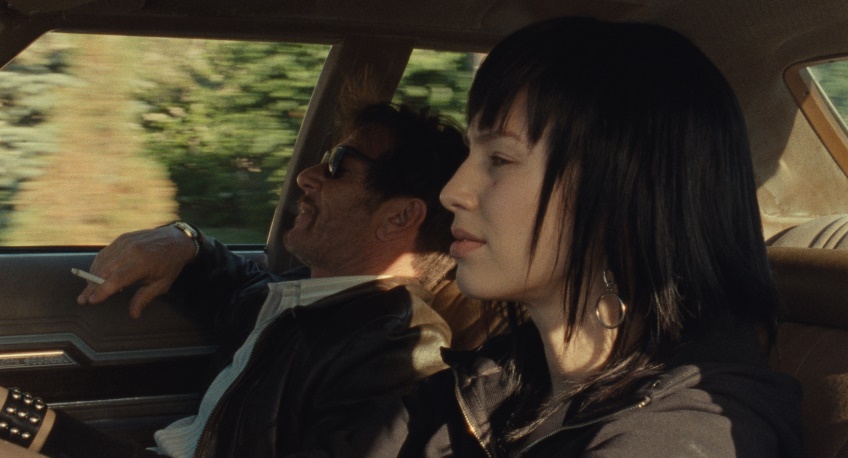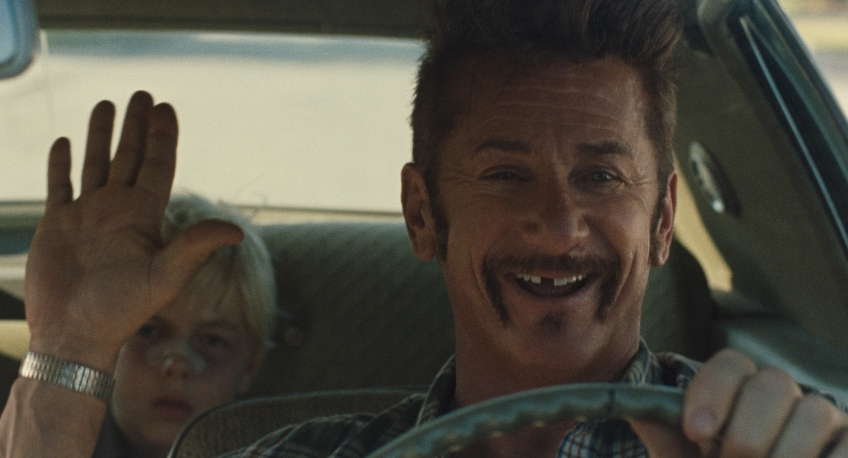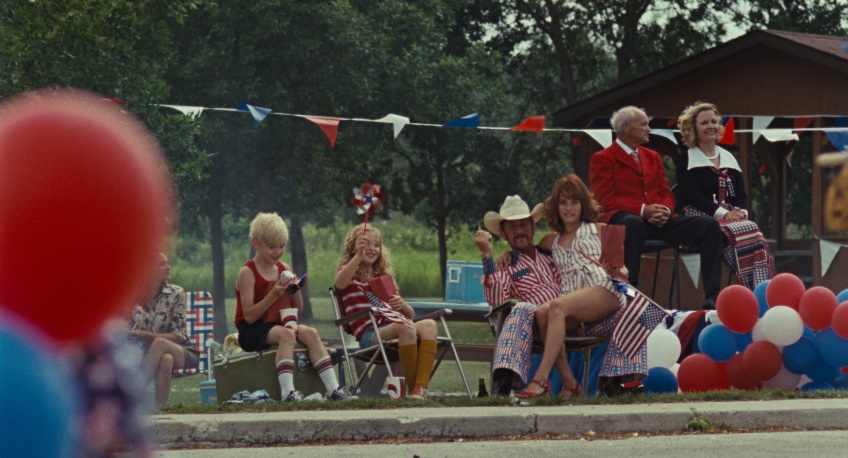Joyce Glasser reviews Flag Day (January 28, 2022) Cert 15, 108 mins.
Sean Penn, who stars in and directs Flag Day, is not only a double Academy Award winning actor (Milk, Mystic River) but directed one of the best films of the millennium. Into the Wild was robbed of the five Academy Awards it deserved, including Best Director. Flag Day was adapted from Jennifer Vogel’s biographical memoir, Flim-Flam Man: A True Family History by John Henry Butterworth (Edge of Tomorrow, Le Mans ’66) and brother Jez Butterworth who wrote two of the most successful West End (and Broadway) plays of the millennium: Jerusalem and The Ferryman. For an added boost to emotional authenticity, Penn even cast his real-life daughter and son (with Robin Wright) as his character’s children in the film. Despite everything Flag Day has going for it, the flags are at half-mast for this true-life drama.
Flag Day tells the story of high school-drop-out-turned-reporter Jennifer Vogel’s life with her charming, delusional, alcoholic, irresponsible and criminal father, John Vogel, a man who loved his children, but was too narcissistic to be a father. John’s birthday was on an obscure American holiday, Flag Day, that John (and the filmmakers) build up as a major holiday. Jennifer narrates, ‘For Dad Flag Day was celebrating his birthday. It was the least his country could do for him.’

Since it is told through Jennifer’s eyes, this perceptive, ironic statement, and others such as, ‘my father’s misdirected pride is connected to his shame and disappointment’ come later in the film, which begins in 1975, and ends in the early 1990s. As a girl and into her teens, Jennifer (Addison Tymec and Jadyn Rylee respectively) hero-worships her father, the kind of man who is so much fun to be with that when he disappears at the first sign of trouble, Jennifer suffers withdrawal symptoms. She even blames their long-suffering mother Patty (Katheryn Winnick) who becomes an alcoholic from sleepless nights worrying about John’s debts.
The film begins almost at the end in a flashback with John being arrested for counterfeiting, and a defiant, loyal but inwardly shocked and furious Jennifer being grilled by the police. He has passed $50,000 but has manufactured many millions –with great skill. John might have been a professional artist (his drawing of Happy Highway Henry – a gift to Jennifer – is a recurrent motif in the film) but has a pathological relationship with money.
In perhaps the longest single dramatic strand in the time-jumping, episodic structure. Jennifer goes to live with John after Patty’s creepy new boyfriend molests her and Patty refuses to confront the truth. Jennifer wants to start a fresh life with her father and asks him to be honest with her. He has to stop pretending he abhors drugs and is busy with his fictitious portfolio of entrepreneurial opportunities and go out and find honest work. This game of playing house ends in a truly heart-breaking scene. John bursts out crying with shame when Jennifer bakes him a birthday cake with an American flag and gives him a personal gift, a souvenir of happier times.
John has no patience with honest work and wants instant returns as though he is seeking attention not just from his family but from the law. First it is setting fire to various start-up businesses and homes for insurance money, a career that was probably cut short by the database of insurance companies. Then it is borrowing money for business ideas (a blue jean’s stretcher being one) and running away from the creditors. Under pressure John might have reasoned, why bother dealing with creditors when you can rob a bank, and then, why risk robbing other people’s money when you can print your own?
This film is a double family affair. Jennifer Vogel is writing about her family, and Penn is portraying Vogel’s father, with his own daughter Dylan Penn portraying Jennifer Vogel, and Hopper Penn (with a very minor role) portraying Nick Vogel. To get through twenty years of Jennifer’s life, Penn has to have three actresses playing Jennifer, so there are diminishing returns from casting Dylan particularly as she is wholesome looking to portray a drugged, hitch-hiking, rough sleeper a bit old (at 30) for the role.

And to get through twenty years the Butterworth’s script not only go back and forth in time but relies on narration that tells us exactly what the camera is showing us. They also rely on long “montage” passages (about a third of the film), often shot with lenses to indicate the past) that substitute for dramatisation. These frequent montage scenes, the narration and time jumping break up the power of the narrative and distance us from any emotional connection with the characters.
When the dramatised scenes occur, they are so intense that they feel slotted in and superficial, as when Jennifer returns to her mother’s home (who has gone through AA and ditched the pervert boyfriend). There is almost instant forgiveness with no discussion about how Patty could ever accuse her daughter of being “ungrateful” to the man who almost raped her. Nick has no conversation with his long-absent sister.
You wonder, too, whether Jennifer is destined to follow in her father’s footsteps (at one point she suggests they smoke weed together rather than each guarding their own stashes) when she fabricates her application for a journalism course at the University of Minnesota. The kindly admissions’ officer is so impressed with her writing that he does not dismiss her, but you can’t but see future lawsuits flashing in his mind with a journalist who prints easily detectable lies on her application.
And then there’s Sean Penn, who seems to be showing off in the way the real John Vogel shows off to his impress his kids but you wonder if it’s intentional. John is such a larger-than-life character that you begin to ask whose story this is, and what it would look like if told from the self-deceiving John’s perspective. We meet, briefly, but long enough, John’s hillbilly mother, but have no idea why or how he became a masochist who sets himself up to be punished; and a lost soul who desperately needs stability but is incapable of holding onto anything.




